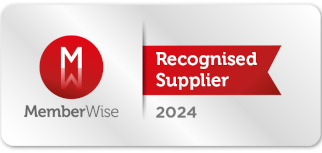
Should brands consider content paywalls?
Howard,
-
DOWNLOAD
Your Content Marketing Checklist >

-
REQUEST TODAY
A Content Consultation >

Many brands are now emulating media businesses with highly evolved content marketing agendas to sell their products, so should they also adopt the content paywalls that some media use to help monetise their content?
What is a content paywall?
A content paywall is one of the best tools for content monetisation and is exactly what you may assume it to be: a piece of software that provides a mechanism allowing audiences to pay for content.
Paywalls are nothing new but have increasingly been adopted by the media because they provide a viable alternative or addition to advertising as a revenue generator. Digital advertising doesn’t generate enough revenue for websites and people rarely click on banner ads. Sites would need to generate millions of page views to earn even just a small amount of money.
A paywall also allows the content creator to focus on the creation of quality content rather than on content that attracts clicks, which can often detract from the quality of any creator’s work.
With the proliferation of free content across the internet not to mention the volume of disinformation or fake news that exists, a content paywall can help media brands re-establish themselves as purveyors of quality journalism.
Types of content paywall
Of course, it’s not as simple as that: there are actually three types of content paywall that the media has experimented with:
A hard paywall is exactly that: audiences can’t access content behind it unless they subscribe, meaning that they either subscribe or leave. Only 3% of news organisations use this method as audiences have to be fully aware of the value of the content behind the wall to want to subscribe. This kind of paywall works best for a very loyal audience aware of the high-value content behind it.
A metered paywall allows audiences a preview of content before they’re asked to subscribe, often allowing users access to a number or articles or access for a period of time.
Key challenges of this type of paywall is how to integrate the system within your website and using data to understand when and where users are most likely to subscribe.
A metered paywall therefore works well for organisations that create a high volume of content.
A freemium paywall offers website owners the best of both worlds, giving their audiences access to basic content with advertising but offering subscribers a more premium option with an expanded catalogue of content without any advertising.
This works for highly trafficked sites but again requires a high level of digital integration.
Unsurprisingly, media that have adopted paywalls have often suffered from a dip in traffic as audiences get used to the new set-up. Furthermore, for organisations relying on SEO to attract an audience, the establishment of a paywall needs careful consideration and integration in order to ensure SEO traffic isn’t affected.
Even for media brands, paywalls require significant considerations over a period of time. This includes the digital integration and testing and learning required before set-up, and the resulting drop in traffic and often long road to profit after it is launched .
Paywall considerations for brands
There are some key lessons that brands can learn from the media and the adoption of content paywalls. While there are now a number of different types of software, such as Tollbridge, which allows for (an easier) paywall integration within existing websites, monetising content through paywalls requires the same analysis of the pros and cons that a media brand would give this revenue stream.
Every brand will have a different way of operating, so while there is no one- size-fits-all answer here, there are some key considerations:
Audience and traffic: While digital content is the actual product for media brands, other brands predominantly use it for promotion and audience acquisition, so anything like a paywall that can impact traffic needs careful examination. Unless, of course, there’s a reason or option to monetise additional extra-value content, such as events, ecourses or ebooks.
Content: Creating a ‘content product’ in its own right is essentially a brand extension, which needs to be tackled in exactly the same way as any other brand extension.
Whether you’re offering a one-off piece of exclusive content or a subscription you’ll need to answer these questions:
- is the content you’re creating of suitable value for your existing audiences to pay for;
- is the content being provided elsewhere on the internet for free;
- can you create content at the scale and quality needed;
- what are your competitors doing in this space;
And, don’t forget your ‘content competitors’ come in various forms, from other brands to influencers, and even users themselves.
Value: Content has historically been served up for free, so it’s important to get a sense of what consumers will and won’t pay for, so the idea of quality content has to be communicated to the audience.
Brands, however, are in a privileged position in that they are often manufacturing products or offering services that can be packaged up with content to provide a valuable combined product. For example, businesses that offer some kind of membership often package up the membership fee with brand partnerships, insurance, products or services and may use content to create magazines, physical or digital, as a value-add. We can all learn from this.
In our brand communities report, a fundamental aspect of brand community membership (where content plays a valuable role) sees users seeking extra incentives to get involved. This is often product-based: 22% of consumers want first access to sales and promotions; 17% want exclusive experiences; and 16% want an early look at new products and services. These can offer the perception of value if content alone isn’t enough for your audiences.
Marketing: As with any other ‘product’, your ‘content product’ has to be promoted on a regular basis. As content marketers, we all understand the importance of reach, engagement and maximising the use of channels in order to gain traction for our products and services. The same is true here.
Ensuring you have the budget and marketing support to deliver the product on an ongoing basis to your target audience will ensure that it doesn’t wither on the vine.
Integration: While the above considerations are all important, it’s also essential to ensure you have the digital support you need to integrate any kind of paywall into your existing website.
Naturally, this isn’t a one-off requirement but an ongoing need - especially if you’re considering a metered or freemium paywall, where testing and learning is particularly important.
In conclusion
While new technologies facilitate revenue generation online through paywalls, any approach needs careful consideration. Content paywalls require a level of sophistication when it comes to digital integration, content and marketing, but there are, of course, options for brands to dip their toes into revenue generation by providing exclusive content via other means.
Digital innovation and the pandemic have changed consumers’ habits, digital solutions and the choices available to brands. If paywalls feel like a challenge, there are easier options. These include online events, ecourses and ebooks, longform video behind paywalls on existing platforms, such as Brightcove and Vimeo as well as the increasing opportunities offered by social media platforms like Facebook and Twitter.
Meanwhile, branded content partnerships allow brands to partner with third parties in order to generate a different type of revenue. Combining any or a number of these initiatives can help brands enter a new realm of content marketing.
Related articles
Read more insightful articles
See more from the blogContent marketing – are you taking a sustainable approach?
The changing face of the luxury consumer
Evaluating the success of your email strategy
How to create a digital magazine
Proud to be a winner of industry awards, recognised as content marketing experts in print and digital media.












